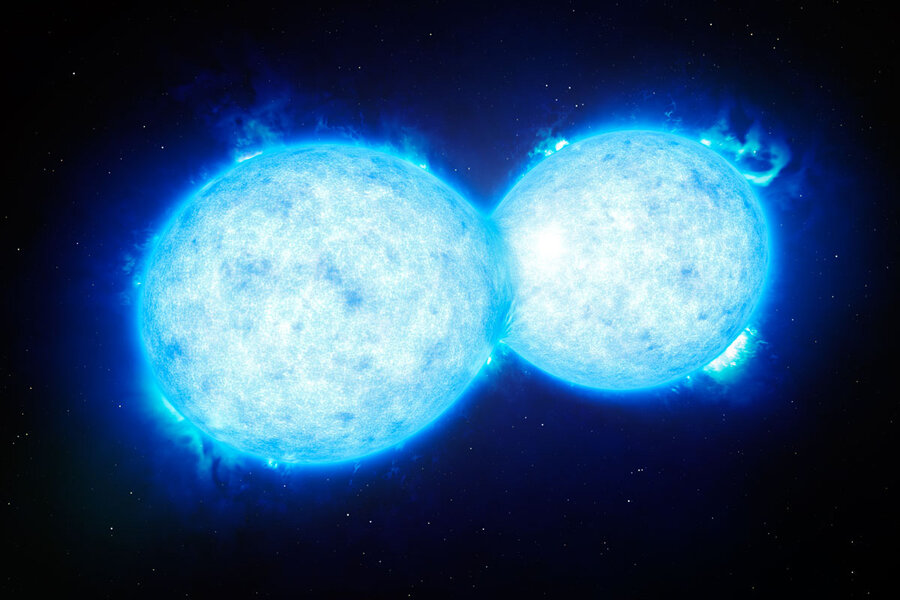Rare embrace: Scientists find star-crossed kiss, 160,000 light-years away
Loading...
Things are heating up in the Tarantula Nebula.
The area is the most active in the universe for new stars, and is some 160,000 light-years from Earth, according to the European Southern Observatory (ESO), an intergovernmental astronomy organization. Two of those stars in particular, a unique binary star system known as VFTS 252, have drawn particular attention as they appear to have come together in a rare celestial embrace.
VFTS 352 is made up of two "very hot, bright and massive stars that orbit each other in little more than a day," according to ESO. The stars' cores are a mere 12 million kilometers apart, which has allowed a bridge to form between the two, conjoining the envelopes of gas that envelop each, and bringing the pair together in what is known as an overcontact binary, a very rare occurrence in the universe.
Two key observations are made from star systems like VFTS 352. They are believed to be the primary creators of elements such as oxygen, and "exotic behavior," according to ESO, might be displayed by so-called “vampire stars”, wherein a smaller star "sucks" material from its larger neighbor. Because VFTS 352 is comprised of two stars very similar in mass, the secondary phenomenon is unlikely to be seen, though they are sharing roughly 30 percent of their material, according to ESO.
“The VFTS 352 is the best case yet found for a hot and massive double star that may show this kind of internal mixing,” says lead author Leonardo A. Almeida of the University of São Paulo, Brazil, in a statement. “As such it’s a fascinating and important discovery.”
The system Mr. Almeida's team discovered is extremely rare because the phase of life being observed in these particular stars is relatively short, according to the researchers, which makes it tough to "catch them in the act."
VFTS 352 is unique for its size, it is the most massive known in its "tiny class" with a total mass of about 57 times that of the sun, and with areas on the surface that top 72,000 degrees Fahrenheit, according to ESO. For comparison, the sun's photosphere is about 10,000 degrees Fahrenheit. In the case of VFTS 352, both stars in the system nearly identical in size, which means that material can be mutually shared rather than pulled from one to the other.
Perhaps unsurprisingly, the young binary system is star-crossed and faces "a cataclysmic fate" the researchers predict will happen in one of two ways.
The first, the stars may combine to form one enormous single star.
“If it keeps spinning rapidly it might end its life in one of the most energetic explosions in the Universe, known as a long-duration gamma-ray burst,” said the lead scientist of the project, Hugues Sana, of the University of Leuven in Belgium, in the release.
Or, they may explode.
"In the case of VFTS 352, the components would likely end their lives in supernova explosions, forming a close binary system of black holes. Such a remarkable object would be an intense source of gravitational waves,” says Selma de Mink of the University of Amsterdam.
If the second possible outcome occurs, it would offer an opportunity for an "observational breakthrough in the field of stellar astrophysics," according to ESO. Waves in space-time are created by changes in robust gravitational fields, as described by Einstein's theory of gravity, but the phenomenon has never been observed first-hand, according to Space.com.








